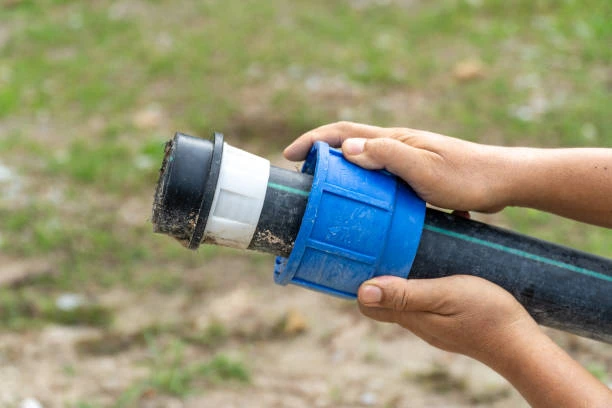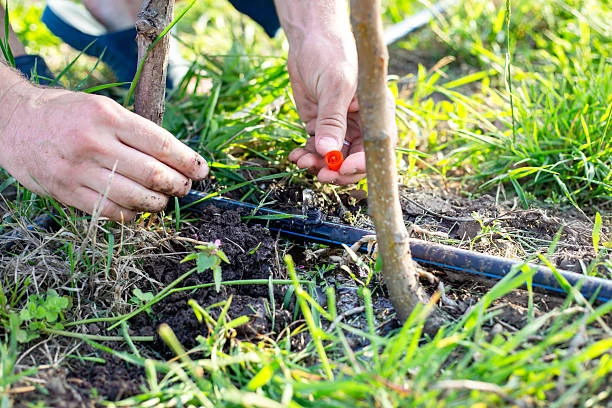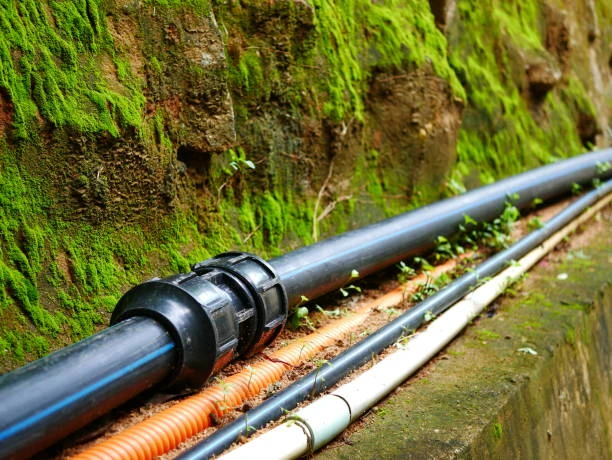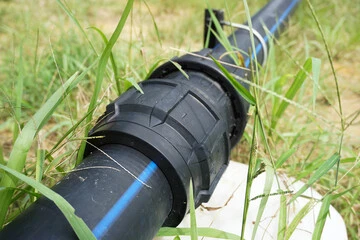1. Introduction
Polyethylene pipe is one of the most widely used piping materials today, known for its flexibility, durability, and chemical resistance. It has become a popular choice across many industries, including water supply, gas distribution, irrigation, and industrial applications. This complete guide will explore the basics of polyethylene pipes, their types, applications, advantages, selection tips, installation guidelines, and comparisons with other piping materials.
2. Frequently Asked Questions (FAQ)
1. What is polyethylene pipe?
Polyethylene pipe is a flexible plastic pipe made from polyethylene polymer, designed to transport liquids and gases safely.
2. What are the common types of polyethylene pipe?
There are mainly three types: LDPE (Low-Density Polyethylene), MDPE (Medium-Density Polyethylene), and HDPE (High-Density Polyethylene), with HDPE being the most common for piping.
3. Can polyethylene pipes be used for potable water?
Yes, polyethylene pipes are safe for potable water and meet various regulatory standards.
4. How long do polyethylene pipes last?
With proper installation and use, polyethylene pipes can last 50 years or more.
5. Are polyethylene pipes easy to install?
Yes, they are lightweight and flexible, which makes installation quicker and easier compared to metal pipes.
3. What is Polyethylene Pipe? Basic Definition and Characteristics
Polyethylene pipe is a type of plastic piping system made from polymerized ethylene. The pipes are known for their smooth interior surface that reduces friction, their excellent resistance to corrosion, chemicals, and abrasion, and their high flexibility.
Key characteristics:
Material: Polyethylene (PE)
Types: LDPE, MDPE, HDPE (most used)
Color: Typically black with color stripes to indicate use (blue for water, yellow for gas)
Durability: Resistant to UV radiation, chemicals, and impact
Pressure ratings: Varies based on pipe diameter and type (commonly PN10, PN16, PN20)
4. Common Applications and Industries
Polyethylene pipes serve a wide range of applications:
Water Supply and Distribution: Safe for potable water delivery in urban and rural areas.
Gas Distribution: MDPE and HDPE pipes are widely used for natural gas and LPG.
Agriculture and Irrigation: Flexible and resistant to chemicals used in fertilizers.
Sewage and Drainage Systems: Corrosion-resistant for underground wastewater systems.
Industrial Piping: Transport of chemicals and compressed air.
Electrical Conduit: Protect electrical cables underground.
5. How to Choose the Right Polyethylene Pipe
When selecting polyethylene pipes, consider the following factors:
a. Material Density
LDPE: Flexible but low pressure rating, used for low-pressure applications.
MDPE: Medium pressure resistance, used in gas and water distribution.
HDPE: High pressure resistance and durability, best for most piping systems.
b. Pressure Rating
Choose a pipe with an appropriate PN (pressure nominal) rating for your application, such as PN10, PN16, or PN20.
c. Pipe Diameter
Select the diameter based on flow requirements and industry standards.
d. Certification and Standards
Ensure compliance with standards such as ASTM, ISO, NSF for potable water, and local regulations.
e. Color Coding
Use the correct pipe color coding to match the intended use (blue for water, yellow for gas).
6. Installation Tips for Polyethylene Pipe
Installing polyethylene pipe requires attention to detail for long-lasting performance:
Trenching: Excavate trench with a smooth bottom free of sharp objects.
Handling: Avoid dragging pipes on rough surfaces to prevent damage.
Joining Methods:
Butt fusion welding for strong, permanent joints.
Electrofusion fittings for flexible and reliable connections.
Mechanical fittings for temporary or repair work.
Bending: Pipes can be bent with minimum radius according to diameter to avoid kinks.
Pressure Testing: Always perform pressure tests after installation to check for leaks.
7. Polyethylene Pipe vs. Other Pipe Materials
| Material | Durability | Flexibility | Cost | Corrosion Resistance | Typical Use Cases |
|---|---|---|---|---|---|
| Polyethylene (PE) | High (50+ yrs) | Very High | Moderate | Excellent | Water, gas, irrigation |
| PVC | Moderate | Moderate | Low | Good | Drainage, cold water |
| Steel | High | Low | High | Poor (rust issues) | High pressure, industrial |
| Copper | High | Low | High | Excellent | Plumbing, HVAC |
8. Conclusion
Polyethylene pipe is a versatile, durable, and cost-effective solution for a wide range of piping needs. Its resistance to corrosion, ease of installation, and long service life make it a preferred material in many industries. Choosing the right type of polyethylene pipe and installing it properly ensures safety, reliability, and efficiency in any project.
IFAN international standard
HDPE pipes are manufactured in accordance with multiple international standards to ensure quality, durability, and application safety. In the U.S., ASTM D3035 and ASTM D3350 define the dimensional and material requirements for HDPE pressure pipes. ISO 4427 and EN 12201 are widely accepted global and European standards for HDPE pipes in water and wastewater systems. DIN 8074/8075 specify German technical norms, while GB/T 13663 is the standard in China. AS/NZS 4130 applies in Australia and New Zealand, and JIS K6760 covers Japanese quality criteria. BS 6572 outlines standards for HDPE pipes in the UK, and CSA B137.1 regulates their use in Canada. These standards ensure that HDPE piping systems meet essential criteria for pressure resistance, chemical stability, and long-term performance in infrastructure and industrial applications.
Connect
IFAN is a reputable Chinese manufacturer with 30 years of expertise in plastic pipes, fittings, and valves. We specialize in copper fittings, brass valves, and plastic piping solutions that meet a wide range of plumbing needs.
If you want to learn more about our cost-effective valve products and comprehensive piping systems, please contact us. Our professional team will reply within 24 hours to assist with your requirements.
Contact Information:
- For more information,pls visit our webside https://waterpipefitting.com/
Pls Mailto: [email protected]
Whatsapp: +86 15088288323
Feel free to reach out anytime for questions about our products or technical advice.














Recent Comments